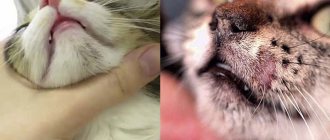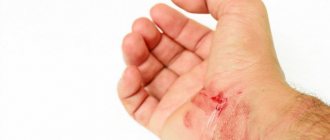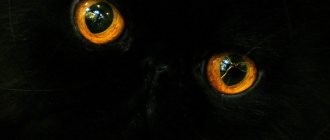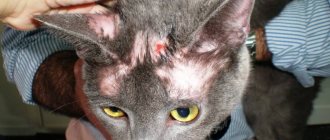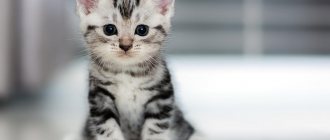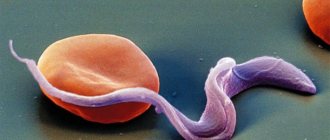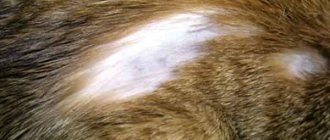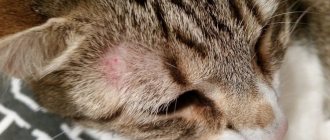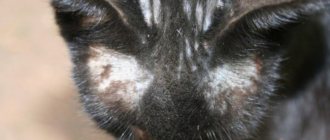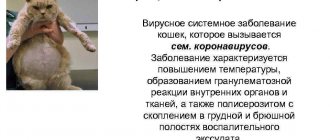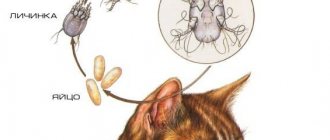Feline lichen (or, as it is called in medical sources, ringworm, microsporia) is a skin disease caused by a fungus and transmitted by contact, that is, through touch.
The causative agents of the infection are fungi of the genus Microsporum canis and Trichophyton tonsurans. You can become infected through direct contact with sick cats, dogs, people, or through household items that contain viable spores.
Most often, it is carried by cats, which is why the disease got its name. Feline lichen in humans can affect any part of the body, but most often it is localized in the scalp, forming bald spots.
Causes of lichen in humans
There are several causes of feline lichen in an adult or child; spores of zoophilic fungi act as causative agents.
Provoking factors for infection with feline lichen:
- failure to comply with personal hygiene rules;
- colds and decreased immunity;
- direct contact with infected animals - in particular cats and dogs;
- abrasions and microcracks of the skin;
- conditions of high humidity;
- stress and long-term use of antibiotics;
- presence of allergens in the room.
When the above factors occur, the risk of human infection with feline lichen increases. The fungus, once in a favorable environment, begins active development. If the body's immune system is strong enough, infection may not occur. The disease can affect patients of different age categories, children and the elderly are especially sensitive to it.
Causes of the disease
The causative agents of the infection are fungi of the genus Microsporum canis and Trichophyton tonsurans. You can become infected through direct contact with sick cats, dogs, people, or through household items that contain viable spores.
An increased risk of infection is possible with fresh cuts, wounds or abrasions on the skin. The disease is most often diagnosed in young children, this is due to the child’s weak immune system. Adults also suffer from feline lichen in immunodeficiency states caused by concomitant diseases and vitamin deficiency.
Is cat lichen transmitted to humans and how does infection occur?
The main carriers of the disease are stray cats and dogs; well-groomed pets rarely suffer from such a pathology. Ringworm primarily affects kittens and puppies. A person can become infected when fragments of fur or keratinized scales come into contact with open skin. Fungal spores can persist for a long time on various objects and settle in dust, so after walking outside you should definitely wash your hands with soap.
Is cat lichen dangerous for humans?
When the fungus gets on the surface of the dermis, it begins to actively multiply and affects the deeper layers of the skin. If the scalp is infected, the spores penetrate the follicles, causing thinning and brittle hair. Short fragments become overgrown with scales, and characteristic stumps are formed, visible to the naked eye.
Is cat lichen contagious and how is it transmitted?
Feline ringworm is an infectious disease that is transmitted mainly from animals to humans. But microsporia can also be contracted through household means. Household items such as a towel or comb can become carriers of the disease. The fungus hides for a long period in sources of allergens: carpets, clothes, soft toys and becomes active at the right moment.
Fungal spores often float in the air, settling on tiny particles of dust or fur. Even dandruff can serve as a carrier of the disease. You can become infected with microsporia through the soil, working in your summer cottage without gloves. Fungal spores are characterized by increased viability and can hide in different environments for about two years.
Is lichen transmitted to humans from cats?
Ringworm is a very contagious disease, so a person can catch it from a sick animal. The most dangerous are yard animals without vaccinations. Microspores can be found on a cat’s fur in large quantities, which upon contact end up on a person’s hands and clothing. The risk increases if there are cuts or abrasions on the skin.
A child can become infected with cat lichen without contact with an animal. Spores can be found on dandruff, skin flakes, or loose hairs, which in turn can easily end up in the sandbox. Fungal spores remain pathogenic for up to two months.
Symptoms and photos
What does feline ringworm look like in humans? The incubation period lasts from 5 days to 2 months, in most cases, symptoms of the disease appear on days 6–7. Microsporia has various clinical signs depending on the location. When smooth skin is affected, a pink round spot first appears, which gradually increases in size. A hyperemic rim of small papules forms along its edge, and the skin peels off in the center. New rims may form around the primary plaque, forming a “ring within a ring,” and fusion of several fragments is often observed. A person is bothered by minor itching.
Cat lichen on the head looks like a bald spot with a flaky center and redness of the skin. The lesions have an irregular shape, unclear boundaries, and can increase in size, affecting a large area and causing hair breakage near the skin at a height of 1–2 mm. The remaining hairs are covered with whitish scales and form stubs with a dark center.
Ringworm in a child during adolescence can occur in a chronic form; girls are more often affected. The formation of microsporia in boys is characterized by a milder course; plaques can resolve on their own when the composition of sebum changes against the background of hormonal changes in the body.
In chronic disease, the occipital, temporal region of the scalp, skin of the buttocks, joints, shoulder girdle, nail plates, palms and feet are affected. On the smooth dermis, plaques look like bluish spots with slight peeling; onychomycosis causes thickening, destruction of nails, changes in their color, lamination, the appearance of spots and tubercles. With severe immunodeficiency, ulcers and abscesses can form.
The nature of skin manifestations with different localization of feline lichen in humans:
| Signs | Location |
| Round spots of pink or red color form on the body. They rise slightly above the skin, have a flaky surface in the center and a ridge along the edges. The formations can grow, quickly spread throughout the body and merge with each other into plaques. Favorite localization is the neck, face and forearms. | Smooth skin |
| Nails change their color and structure - they acquire a yellow tint and become brittle. | Nail plates |
| The spots form against the background of slightly reddened and swollen skin. They have a round shape with clear boundaries, surrounded by small bubbles. The surface is covered with small scales, the skin looks as if sprinkled with flour. The lesions can be multiple or single with a large diameter. The hair at the site of the lesion is different from those located in healthy areas. They break off 0.5 cm from the base and have the appearance of being trimmed. Damaged hairs can be easily pulled out with tweezers. When you try to smooth them out, they do not return to their previous position. | Scalp |
The appearance of skin changes in people is accompanied by itching and peeling of these areas. In rare cases, body temperature rises, severe general weakness, drowsiness bothers you, and the lymph nodes become enlarged.
Varieties and atypical forms
In medicine, two types of feline lichen have been identified. If the infection occurred from an animal to a person, the disease is called microsporia, but if the virus passed from person to person, it is called trichophytosis.
In total, more than 20 species of the Microsporum fungus are identified, among them several pathogenic groups are distinguished, in particular: atropophilic, zoophilic and geophilic groups.
Microsporia of the scalp can have the following atypical forms:
- the infiltrative form is expressed by the appearance of hyperemic spots, the outlines of which are somewhat elevated above the surrounding skin, and the hairs are broken off at a distance of 3-4 mm from the base;
- in the suppurative form, inflammatory processes are clearly expressed. In this case, you can see soft bluish nodules with pustules on the surface;
- exudative microsporia is characterized by the appearance of small bubbles, bursting, they form a dense crust;
- the trichophytoid form is distinguished by small lesions throughout the scalp. With this form of the disease, spots appear with pityriasis-like peeling, with unclear boundaries, without inflammatory signs;
- The seborrheic form is manifested mainly by partial hair loss, the lesions being covered with small scales.
Diagnostics
Treatment for feline lichen can begin only after an appropriate diagnosis has been made. For this purpose, a Wood's lamp is used (produces long-wave ultraviolet radiation). When the scalp and other parts of the body are scanned, the affected hair glows green, which resembles the glow of phosphorus.
This diagnostic method allows:
- determine the type of fungus;
- detect even a single case of infection;
- evaluate the result after the course of therapy;
- monitor the condition of the hair of people who were in constant close contact with the patient.
For a final and more reliable diagnosis, laboratory tests are required:
- Studying hair under a microscope. With feline ringworm, a mosaic arrangement of microspores is observed.
- Bac sowing. This method allows you to determine the type of fungus, so you can prescribe the optimal treatment.
Differential diagnosis
Symptoms of lichen need to be able to be distinguished from signs of similar diseases. If changes affect the scalp, it is necessary to differentiate them from alopecia areata. With this skin pathology, hair loss is observed with the formation of spots, lesions or bald spots similar to ringworm. The peculiarity of the disease is the absence of signs of inflammation (redness and swelling), itching and peeling. In addition, the hair does not break off at the base, but falls out entirely.
Eczema has many varieties. However, all forms are characterized by general symptoms that are similar to the manifestations of ringworm - hyperemic spots form on the inflamed area of the skin. They are surrounded by small bubbles filled with serous contents. The formations open with the subsequent appearance of grayish-yellow crusts.
A feature of eczema is evolutionary polymorphism - a phenomenon in which all primary morphological elements (spots, blisters, seropapules) appear simultaneously. Finally, the disease can be confirmed by bacterial culture and microscopy of the test material.
Psoriasis is quite similar clinically to ringworm. Both diseases are accompanied by the appearance of bright red spots on the body that rise above the surface of the skin. The affected areas peel off, but with psoriasis this process is more pronounced. The formation of elements is accompanied by severe itching.
In addition, when peeling, a bleeding surface is revealed - a symptom of “blood dew” characteristic of psoriasis.
Lichen planus appears as dark red or purple lumps (nodules). Sometimes bubbles with liquid contents may form on them. Lesions are usually located in groups, creating a “garland” appearance or characteristic patterns on the body - a lace mesh, snowflakes or tree-like branches. Favorite localization is the skin of the hands and feet in the joint area. The disease is fundamentally different from microsporia in that it is not infectious in nature, but is an autoimmune disease. Accordingly, it is not contagious and cannot be transmitted from one person to another.
Diagnosis and treatment
Treatment of feline lichen is carried out by a dermatologist after an examination and receipt of laboratory diagnostic results. Microsporia has characteristic external signs; microscopy reveals the causative agents of the disease. For analysis, a skin scraping or a fragment of affected hair or nails is taken.
At the initial stage, feline ringworm is easily treatable. If smooth skin is affected, single lesions appear, local treatment with antifungal ointments and iodine preparations is sufficient. In complicated cases, systemic administration of antimycotics and external therapy are required.
How to treat cat lichen
Modern treatment allows you to quickly and quite effectively cure lichen in an adult or child, although relapses of the disease and its transition to a chronic form are possible.
The main directions in treating this disease at home are:
- oral use of antimycotic (antifungal) drugs of general action (griseofulvin, terbinafine, itraconazole, etc.);
- local treatment with antifungal drugs in the form of creams, ointments and shampoos;
- local treatment of affected areas with developed purulent inflammation with antiseptic substances.
Small areas of smooth skin can be treated with topical treatments, but larger areas or scalp lesions can only be treated with topical medications. An important point in how to treat lichen transmitted from a cat in humans is the observance of personal hygiene measures. A sick person should store personal items separately and not comb the affected areas.
When identifying sick people in children's institutions, medical workers carry out appropriate disinfection.
Causes of the disease
The disease is fungal, transmitted by contact, without qualified treatment, the affected areas increase in size.
The main reason for infection by spores of the fungus zoophilic microsporum is the lack of immunity, so most often children who come into contact with sick animals (dogs, cats, rodents, birds), sick children or contaminated soil become infected with lichen.
To infect a child with a weakened immune system, it is not at all necessary to kiss a sick kitten; it is enough to play in the sandbox where a dog with lichen was previously lying. An unvaccinated pet that never goes outside can get spores through the owner's shoes brought from the street.
Drugs for the treatment of lichen
Ringworm received from a cat usually begins with a maternal plaque - one spot, from which the rest then grow. If, upon presentation, the patient is found to have only one spot, that is, the disease has not yet spread, then there is a chance to cope exclusively with local medications.
In advanced cases, applying compounds to the skin is only part of complex therapy. Your doctor may prescribe the following medications:
- Antimycotic ointments. Preparations of this group usually have a thick consistency so that they remain on the skin for a long time and do not spread, and are not able to penetrate into the deeper layers, which reduces the risk of side effects. The most commonly used products are based on clotrimazole, micoconazole, ketoconazole (Clotrimazole, Dermazole, Lamisil, Mycoseptin, etc.). Application of such compositions is necessary several times during the day, but only a specialist can give accurate information on this issue.
- Means for drying out lesions - they help relieve inflammation and speed up the healing process. For lichen, you can use salicylic, sulfur, sulfur-tar ointments. The skin can also be treated with iodine.
- Antifungal solutions. They are used primarily for treating hairy parts of the body due to ease of application. Examples of drugs: Nitrofungin, Yodicirin.
If necessary, stronger drugs can be prescribed in the form of tablets for oral administration, for example, Fluconazole, Lamisil, Orungal, etc. Antimycotics allow you to fight the fungus systemically, giving faster results, but they also have a larger list of side effects. Treatment is not quick, but usually involves therapy for 2–6 weeks.
What does ringworm look like in cats?
In the cat world, the type and distribution of the type of disease will depend on the region, but usually the culprit is the fungi Microsporum canis, Microsporum gypseum or Trichophyton, namely:
- Microsporum - causes microsporia.
- Trichophyton - causes trichophytosis.
A photo of what ringworm looks like in a cat can be seen at the end of this article.
Clinical manifestations will not differ in either case. Fungi can be found either on the sick cat itself or in its main habitat. The spores that fall from it may be viable for another two years. A warm and moist environment is important for fungal growth . In this case, the symptoms of lichen may not appear at all. Only special tests can indicate that a cat has this disease.
Usually, when the disease has passed, small round spots without hair can be observed in a cat. On these spots, scales can be seen in their central part. There may also be small pustules and blisters. Over time, the size of the spot increases. Places - head, ears and tail. Less commonly, ringworm can cover a cat's entire body.
Folk remedies for treatment
Folk remedies can only be an additional treatment to help get rid of unpleasant sensations. The most effective treatments for feline ringworm are the following:
- Apple vinegar. Compresses with this remedy are effective. To do this, soak a cloth in vinegar and then apply it to the affected area. The number of procedures per day should be six. The last time the compress should be applied is before going to bed. Vinegar effectively fights the itching that often accompanies lichen, and prevents further spread of the disease. This is due to the fact that vinegar changes the habitat of the fungus, changing its acid-base balance towards oxidation. The fungus cannot live in such conditions, so it dies. In addition, apple cider vinegar contains a large amount of amino acids that promote rapid skin regeneration.
- Newspaper ash. A large newspaper needs to be rolled into a tube and tied in three places. Place this bundle on the bottom of the plate and set it on fire. Allow the newspaper to burn completely. The brown substance that forms on the plate has medicinal properties. Without waiting for it to cool, lubricate the affected area. Two or three procedures are enough for recovery. Newspaper ash has a detrimental effect on the fungus that causes lichen. Newspaper paint contains zinc, which is an antiseptic and has a restorative and strengthening effect on the skin. Because of this, ashes are able to relieve itching, dry and disinfect it, and protect the healthy epidermis from further spread of infection.
- Tar. It (150 g) must be mixed with two yolks, 100 g of cream. Rub this mixture into the affected areas twice a day. Tar can also be mixed with butter. Apply the resulting mixture to the affected area and then apply a bandage. Do this procedure at night. Tar promotes tissue rejuvenation and renewal. This product also has a disinfecting effect.
Treatment and prevention of the disease
Ringworm is a disease that needs to be treated in a qualified manner. Therefore, at the first suspicious signs, it is necessary to urgently go to the clinic. The doctor will determine the type of lichen and prescribe treatment.
You can cure ringworm on your own. For this purpose, antifungal drugs Lamisil, Clotrimazole, Miconazole are used. The ointment is applied only to the affected areas two to three times a day, moving from the edge of the spot to its center. The use of ointment can be alternated with iodine applications.
When the disease spreads over large areas of the body, it is recommended to supplement the treatment with antibiotics that destroy fungal cells and prevent their proliferation: Griseofulvin, Orungal, Ketoconazole, etc.
Traditional treatment can last from seven to ten days.
Other treatments
Hardware methods are also effective:
- Laser therapy. It is used for itchy types of lichen, although it has a beneficial effect on the skin for other types of lesions. For treatment, a laser with low-intensity radiation (red or infrared) is used. Laser radiation has an antibacterial effect, eliminates inflammation and itching, soothes the skin and reduces its sensitivity. This procedure cannot be performed during pregnancy, in the presence of cancer and infectious diseases, blood diseases, open form of tuberculosis, as well as during the acute period of a stroke or heart attack.
- Heliotherapy and UV irradiation. This procedure involves sun treatment in aerosolariums or on equipped therapeutic beaches (they have special roofs with filters). UV rays increase the peeling of the skin, causing all the affected skin to be removed, along with the fungal spores. The optimal duration of exposure to sunlight is 2 hours. It is recommended to choose a time before 11 am or after 16 pm. During the interval between this time, the sun is very aggressive and can have a detrimental effect. While in the sun, it is recommended to drink water in small portions, since UV rays also affect the body's metabolism. It is not recommended to sunbathe on an empty stomach or immediately after eating. The optimal position is lying on a trestle bed about 40 cm high with the head end slightly raised. The head must be in the shade and the eyes must be covered with sunglasses.
- Cryodestruction. The procedure involves the use of liquid nitrogen. The most effective method is for excessive skin lesions. Cryodestruction is approved for use during pregnancy and childhood. During exposure to liquid nitrogen, antimicrobial and antiviral immunity is formed, which prevents secondary infection. It is recommended to use the method in combination with drug therapy.
Disease prevention
Any disease is easier to prevent than to treat. Therefore, we advise you to follow simple rules so as not to become infected with diarrhea:
- do not touch stray animals with bare hands;
- if pets have contact with yard animals, regularly bring them to the veterinary clinic for examination;
- wash your hands thoroughly after going outside;
- If you suspect a lichen disease, contact a dermatovenerologist in a timely manner.
Take care of your health and consult a doctor promptly if you have any suspicious symptoms.
How to properly disinfect?
Answer: The spores of the pathogen remain viable for several months, so it is imperative to treat the patient’s personal items (combs, scissors, towels) and the room itself.
Clothes and bedding can be washed with regular powder at 60°C, and heat-resistant materials can be washed with bleach at 90°C. Furniture in which the patient’s personal belongings are stored must be treated with a disinfectant (for example, Terralin)
Diagnostic methods
There are several ways that help the doctor determine and clarify the patient’s diagnosis:
- The use of a Wood's lamp during examination, which emits ultraviolet light. The part of the head affected by the spores will glow slightly green.
- Bacteriological research . For analysis, hair stumps and scales are taken from the affected area. They are then examined under a microscope to see if they contain pathogens. In the upper layers of the skin, specialists can detect fungal mycelium and spores.
- Using a fluorescent lamp, you can detect the presence of lichen. The affected areas of the skin will glow slightly.
Prevention
As a preventive measure, it is necessary to promptly identify foci of the disease and isolate infected representatives. Also recommended:
- Disinfect personal items and systematically examine children and pets.
- Observe personal hygiene rules.
- Take vitamin complexes in the autumn-winter period on your own or after consulting a doctor.
- If there is a risk of infection, regular sanitary cleaning of premises with chlorine-containing disinfectants will be useful.
- If domestic dogs and cats live in the country in the summer, they must be scanned with a Wood's lamp for the presence of trichophytosis or microsporia.
Prevention of lichen
The basis of preventive measures is compliance with the rules of personal hygiene. Parents should have explanatory conversations with their children about what the consequences of contact with street animals may be. A cat living in the house should be examined for the presence of fungus.
In order for caregivers or relatives to minimize the likelihood of contracting lichen, the following precautions should be taken:
- The sick person should use only individual hygiene items (towel, washcloth, comb) and bed linen.
- After contact with lesions, you must wash your hands thoroughly with soap.
- Topical preparations should be applied to the patient's skin using disposable rubber gloves.
- Be sure to disinfect personal items that belong to the patient.
- It is recommended to regularly sanitize the premises with disinfectants containing bleach.
- The sick person's clothes should be washed and ironed at high temperatures.
- It is important to strengthen the body’s immune forces; for this you need to additionally take a complex of vitamins.
The success of prevention will depend on timely detection of the source of infection and its isolation.
Complications and prognosis
Even if there is no treatment for a long time, severe complications do not occur with lichen. In most cases, the outcome of the disease is favorable, with complete recovery. If a person has developed an infiltrative-suppurative form of the pathology, then the risk of irreversible focal baldness increases.
Ringworm is a harmless but very unpleasant disease. It can affect every person who neglects the rules of personal hygiene. And if your pet gets away with a small amount of broken hairs, then the person risks losing all his hair in a very short time. Therefore, it is important to take preventive measures in time or consult a doctor in a timely manner for treatment.
Psoriasis: symptoms (photos), causes and treatment Itching of the scalp - causes and treatment Solar lichen in humans: photos, symptoms and treatment Tubular lichen: symptoms and photos, treatment with drugs
Routes of transmission from animals to humans
The spores land on the hair and are very quickly absorbed by the skin, where they multiply at incredible speed. Soon after this, you may notice white, red or pink spots on your pet's body.
Despite the fact that feline lichen is considered more of a fungal disease of animals, in particular the cat breed, it happens that spores of the fungal infection are transmitted to dogs and humans. And since the spores of this fungus are quite flexible and life-resistant, when they get on the human body they feel great, causing inflammation of the skin.
Most often, feline lichen affects children aged 4 to 15 years.
Is it necessary to treat deprivation in a person from a cat? Of course, it is necessary, and the sooner you start fighting the disease, the better. Most often, lichen can be seen on the skin of older people and children. Usually the treatment process takes a long time. It is very important to see it through to completion.
